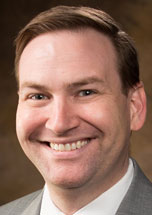
January is a hard month for consumers. In addition to recovering from holiday spending,
consumers are often paid early to accommodate the holiday break and then have to stretch
that paycheck an extra week until they’re paid again in January.
One thing that will likely make budgets even tighter is food inflation, which Dinesh Gauri, Rupinder Jindal, and Yu Ma discuss in a recent Progressive Grocer article. The increases in commodity prices, labor costs, and transportation costs have been
passed along to consumers, and low-income consumers have felt these increases more
sharply than mid- or high-income consumers.
Low-income consumers saw the goods they purchase increase 6.3% in 2020, more than
double the 2.7% increase in prices high-income consumers experienced. Low-income consumers’
purchasing power was further reduced because they routinely lack broadband access
and thus cannot save money by shopping online. Additionally, low-income shoppers tend
to purchase essential items, which are rarely discounted or discounted only if purchased
in bulk. Low-income consumers miss out on these discounts because they cannot purchase
in bulk, due to limited storage space and because they cannot afford the higher one-time
cost of a bulk purchase. This isn’t even accounting for shrinkflation, the decline in product size or quantity without a price reduction, which became more noticeable during the pandemic.
So, how can Januarys be made less painful for low-income grocery shoppers?
The bad news is that prices rarely fall at the same pace they increase. The stickiness
of price increases will thus create a longer-lasting purchasing power disparity between
low-income and higher-income shoppers. The good news is that the Emergency Broadband
Benefit program offers one-time discounts for hardware and up to $50/month towards
broadband service fees. This program will allow low-income consumers to price shop
and order online. Additional programs have been proposed or piloted to bring more
grocery shopping options to “food deserts,” have online retailers accept SNAP benefits,
and increase public transit funding to give low-income shoppers access to chain stores
and supermarkets.
Many of these efforts, however, are still in early stages or face funding shortfalls.
Closing these gaps quickly will require government, industry, and non-profits working
together to ease the burdens lower-income consumers routinely face. As Gauri, Jindal,
and Ma write, closing these gaps and easing these burdens will not only “benefit brands
and retailers by lifting overall sales but deliver greater good as well.”







